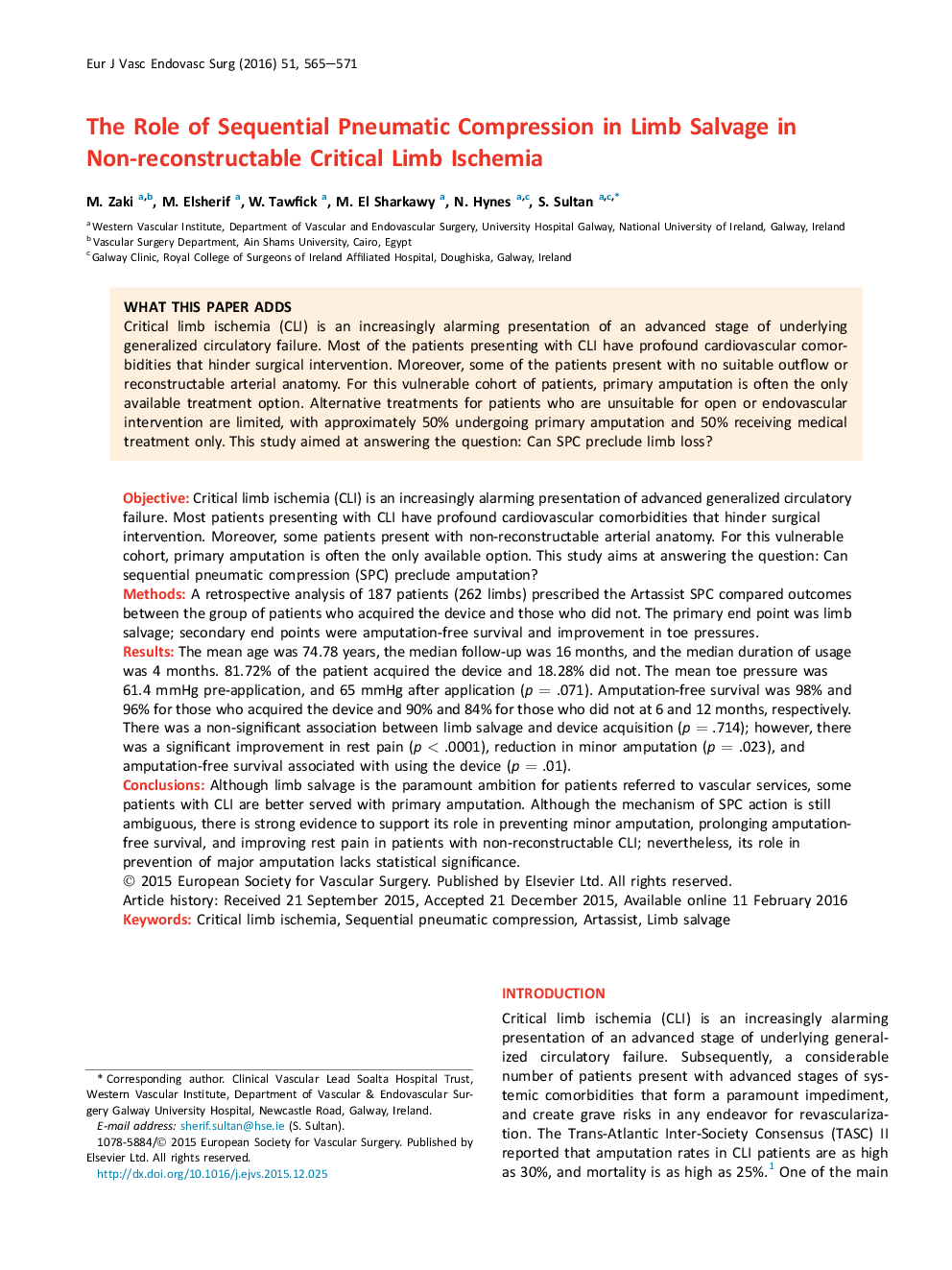| کد مقاله | کد نشریه | سال انتشار | مقاله انگلیسی | نسخه تمام متن |
|---|---|---|---|---|
| 5957351 | 1575431 | 2016 | 7 صفحه PDF | دانلود رایگان |
ObjectiveCritical limb ischemia (CLI) is an increasingly alarming presentation of advanced generalized circulatory failure. Most patients presenting with CLI have profound cardiovascular comorbidities that hinder surgical intervention. Moreover, some patients present with non-reconstructable arterial anatomy. For this vulnerable cohort, primary amputation is often the only available option. This study aims at answering the question: Can sequential pneumatic compression (SPC) preclude amputation?MethodsA retrospective analysis of 187 patients (262 limbs) prescribed the Artassist SPC compared outcomes between the group of patients who acquired the device and those who did not. The primary end point was limb salvage; secondary end points were amputation-free survival and improvement in toe pressures.ResultsThe mean age was 74.78 years, the median follow-up was 16 months, and the median duration of usage was 4 months. 81.72% of the patient acquired the device and 18.28% did not. The mean toe pressure was 61.4 mmHg pre-application, and 65 mmHg after application (p = .071). Amputation-free survival was 98% and 96% for those who acquired the device and 90% and 84% for those who did not at 6 and 12 months, respectively. There was a non-significant association between limb salvage and device acquisition (p = .714); however, there was a significant improvement in rest pain (p < .0001), reduction in minor amputation (p = .023), and amputation-free survival associated with using the device (p = .01).ConclusionsAlthough limb salvage is the paramount ambition for patients referred to vascular services, some patients with CLI are better served with primary amputation. Although the mechanism of SPC action is still ambiguous, there is strong evidence to support its role in preventing minor amputation, prolonging amputation-free survival, and improving rest pain in patients with non-reconstructable CLI; nevertheless, its role in prevention of major amputation lacks statistical significance.
Journal: European Journal of Vascular and Endovascular Surgery - Volume 51, Issue 4, April 2016, Pages 565-571
